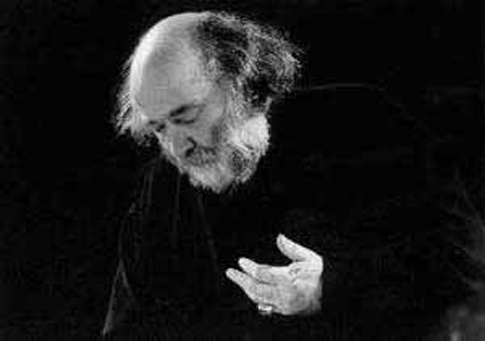Where unfinished works are concerned, the question of authenticity becomes a
prominent issue for musicologists and, for that matter, anyone who finds
intrigue in a little bit of mystery. What would the end be like? Was this
really how Mozart intended it to be? Several years ago, the feature film
Amadeus, portrayed that Antonio Salieri was responsible for
completing the Requiem, however, three composers are actually
responsible for its completion, not including him. Salieri was not the
composer to whom Mozart dictated the Requiem on his deathbed. Franz
Xavier S¸ssmayer was responsible for writing the Sanctus,
Benedictus, and Agnus Dei. For the ending he merely
reprised the music of the opening Kyrie. Earlier, Josef Leopold
Eybler had been commissioned to complete the Mass by Mozartís widow.
Finding the task too difficult, he was unable to complete it and passed the
responsibility to S¸ssmayer. The unfinished manuscript remains a remarkable
piece of evidence that contributes to the enigma of Mozartís
Requiem.
 Sigismund Neukomm
Sigismund Neukomm
Now, a fourth composer has been associated with the mysterious
Requiem: Sigismund Neukomm (1778-1858) provides an alternative
conclusion. Once a pupil of Michael Haydn in Salzburg, the Austrian Neukomm
was both a valued collaborator of Joseph Haydn and an untiring traveller. In
1816, he journeyed to Rio de Janeiro where he met Father JosÈ Mauricio Nunes
Garcia (1767-1830) (mestre de capela to Emperor Jo„o VI), who asked
Neukomm to write a Libera me which would conclude the first
performance of Mozart’s Requiem in the New World (conducted by Nunes
Garcia on 19 December 1819 at the Church of the Brotherhood of St Cecilia in
Rio de Janeiro). Neukomm put his final touches to the score on 24 January
1821, according to the recovered manuscript. This, live, TÈlÈrama
recording is the first to use the Neukomm ending.
The Requiem Aeternam begins with an appropriate funeralistic
tempo that is well chosen by conductor, Jean-Claude Malgoire as he leads the
woodwinds and brass into a crescendo, culminating in the entrance of the
chorus. Since this is a live recording, the balance between the orchestra and
chorus, at first, is unbalanced, such that the choir is slightly overpowered
by the orchestra. For a listener who is unfamiliar with the Requiem,
the suppression of the voices makes the text rather unintelligible. The unity
of the choirís inflections, however, allows for some control over the
imbalance. The choral voices, in and of themselves blend remarkably. Soprano,
Hjordis ThÈbaultís entrance on Te decet hymnus, Deus is elegant,
but perhaps lacks that silvery, pure quality that is often required of a
Mozartian soprano. The dotted-16th entrances, by the low strings, enter with
an effective dramatic purpose at the Exaudi orationem meam cleverly
colouring the text. As with all good choral writing, Mozart reserves the use
of polyphony (more than one interacting voice in simultaneous motion) for the
repetition of the Requiem Aeternam phrase, where it had previously
been set homophonically (in unified by harmony central rhythmic blocks).
Since the text has already been stated, it is now enhanced by the multiple
entries of diverse voices.
At the Kyrie Eleison, a grand fugue, complete with vibrant
melisamas and sequences in an ascending manner, is precisely intoned by the
orchestra and chorus. Perhaps the tenors here sound a little strained because
of the high tessitura and expansive range that Mozart demands. The web of
polyphony ends on a wonderful diminished chord enhanced by the brass
superimposed over what had been a more dominant string section. Choirmaster,
Kantorei Saarlouis, exhibits excellent control over the choral properties
here, Malgoire equally defines control and artistic aptitude with his
orchestra.
The second part, otherwise known as the Sequence, begins with the most
ominous Dies Irae. Malgoire, inflects the morbidity of the text by
demanding a more pronounced use of the brass. Unfortunately and as a result,
the voices seem rather unbalanced where they might have been more prominent
here. Comparatively, in the Quando judex est venturus, the
orchestral texture thins out and allows the chorus to emerge beautifully and
display their affective and precise articulation.
 Alain Buet
Alain Buet
In the Tuba Mirum Mozart introduces the third of three textures
used in the Requiem. In the first two sections, he uses homophony
and polyphony (contrapuntal). In the Tuba Mirum he introduces his
cantabile. The opening chord is delineated by a solo horn and
juxtaposed with a noteworthy entry by Bass, Alain Buet, whose lyrical bass
voice is enhanced by effective diction, expressivity, and articulation. The
following entrance by Tenor, Simon Edwards on Mors stupebit et
natura is equally as impressive, especially in conjunction with the
simultaneous entrance of the strings after the solo horn introduction.
Simon Edwards continues into the Liber Scriptus where a horn
interjects with subtle interludes. Mezzo-soprano, Gemma Coma-Alabert, in a
rather weak entrance, commences with In quo totum contenitur. Her
voice is lovely but lacks sufficient tone in the lower and middle registers
where the orchestra overpowers her well-enunciated diction.
As the sequence continues, Hjordis ThÈbault continues with the Quid
sum miser. Permeated by a series of statements and pauses between the
text, the Cum vix Justus sit securus, indicates a questioning
motive. Unfortunately, Ms. ThÈbaultís inflections do not ultimately
achieve this stylistic gesture, however the solo quartet, upon their entry,
elegantly evokes the questioning manner required for this text. The harmonic
writing for the solo quartet is a definitive example of Mozartís elegance
and ability to create unified blocks of sound from four individual voices, as
he often achieved in his string quartets. The four soloists achieve this
affect gracefully. Malgoireís orchestra ends with a beautiful cadence that
moves from peace into chaos.
In the Rex Tremendae, another of the significant texts in the
Requiem, the interplay between the dotted sixteenths in the strings
and the blasts from the horns, is wonderfully captured by Malgoire. In this
most stirring and often memorable movement of the sequence, the choir enters
with a wonderfully rolled Rex, which is not often applied by
choruses. The affect of the rolled consonant is, in fact, appropriate here.
Rather than concentrating the melody into the voices, Mozart offers it to the
orchestra with interplay by the choir. Malgoire is masterful in this section
and becomes seemingly attentive to the balance and dramatic interchange
between instruments and voices. The chorus functions almost as an
obbligato. In this instance the orchestra is rightfully louder than
the chorus, that enunciates with superb diction. The ensuing Salva
Me is expressively presented by the sensitive interchange between the
choristers.
Woodwinds open the Recordare with a reminiscent tone, followed by
the strings and the entry of the mezzo, and bass, and followed by soprano and
tenor. The polyphonic setting of the movement, with the strings doubling the
vocal parts, is moving and well orchestrated by Malgoire. A few of the
entrances by the solo quartet are not always in complete unison,
rhythmically. The entries of bass, Alain Buet, however, are noteworthy for
his expressive dramaticism.
The Ingemisco moves in well-chosen triple time and the homophonic
textual setting is appropriate and well effected by the quartet. Mezzo,
Coma-Alabert produces a lovely artistic moment here, where her voice becomes
the central point around which the others circulate. In this movement, the
orchestra does not overpower the voices, where in other movements it was a
little too overbearing. Malgoire is attentive to the articulation and
expressive nuance of the singers.
 Jean-Claude Malgoire
Jean-Claude Malgoire
One of the significant attributes of the Confutatis is the
extreme enharmonic and chromatic modulations. Successive lines of text are
given in A-minor, Ab-minor, G-minor, and then via F#-major and F-major. Where
the text, Confutatis Maledictis predominates, Malgoire allows the
percussion section and brass to lead the orchestra. It becomes a character in
its own right. Contrasted by the etheareal Voca me cum benedictis
the chorus invokes the representation of light and dark, where death is the
dark hue. An almost airy sound is generated on the Voca me
entrances, that are appropriate and wonderfully colouristic. The strings
continue with in ostinato where numerous luscious dissonances are signified
by Malgoiresí artistic attention. The juxtaposition of the Dies
irae text and the Oro supplex et acclinis is one of Mozartís
magnificent moments in the Requiem and is well applied by the chorus
and orchestra as a whole.
The more lyrical Lacrymosa moves into unexpected keys and is
where the chorus displays its ability to use dynamic expansion to its
fullest. The interplaying horns and later percussion elegantly merge into the
mix. In essence, Malgoire re-defines the balance issue that was evident at
the beginning of the recording; through each movement, the balance becomes a
tool of his own artistry. The orchestra and percussive elements of the
Lacrymosa are balanced beautifully. In addition, the strings of
Malgoireís orchestra are perhaps the most remarkable element, unified with
precise articulation, especially for Mozartian aesthetic stylings.
The sequence ends and moves into the Offertoire with the
Domine Jesu. Again the chorus is much more prominent here, and is
mindful to create lovely entrances of Libera eas that occur in a
stretto-like fashion. They are wonderfully complimented by the
orchestra, which becomes the underlying emotional figure with its continuing
ostinato rhythmic pattern. The soloists enter in fuga at Sed
signifier sanctus Michael with perhaps their most stunning moment of the
recording. The solo quartet functions as a unit against the chorus, rather
than four individual soloists. One might equate it to the function of the
small ensemble in the Baroque concerto grosso. The triple meter
change at Hostias et preces tibi is surely to evoke the trinity.
Mozart sets this homophonically, with the strings playing in syncopated
rhythms. The chorus continues to be well balanced with the orchestra, even
now as the lower strings move in step downward descent. Again, as is typical
of good choral writing, the chorus repeats the text in polyphony where,
initially, it was stated homophonically, enhanced now by the horns and
interjecting trumpets.
The following section requires that the orchestra and chorus function as a
unit with the opening, thrice invoked Sanctus. Beginning in
fuga, the Hosanna allows an opportunity for the orchestra
and chorus combine forces and increase tension through dramatic inflection.
Although Mozart could have likely expanded the Hosanna, he keeps it
to a minimum and intends it to build toward, what is often, the most beloved
moment of any mass, the Benedictus. Mezzo, and soprano enter first,
but Coma-Alabertís mezzo again lacks in the lower register. The expressive
quality of this section seems slightly rushed where it could have been more
liberal; yet, the beauty of the quartet is still evident. The binary form of
this section is separated by a lovely moment in the clarinets that divides
the opening text such that it now begins with bass Alain Buet, who expresses
most beautifully in this section. His artistry is unparalleled on this
recording and he shows himself to be an artist of consummate ability and
expression. His bass is never forced and is liquid in its seemlessness.
Unfortunately, to make the solo quartet stronger, the two outer voices should
have functioned similarly, but Ms. ThÈbaultís soprano failed to produce a
parallel seamlessness.
The Agnus Dei, well inflected by the orchestra is enhanced with
percussive strokes and accents to support the thick, overall orchestral
texture. Once again, the chorus dominates the movement with interjecting
entrances by the woodwinds and strings, which beautifully produce circular
scalar-like patterns in the violins.
The entrance of mezzo, Coma-Alabert in the Lux Aeterna is lovely,
and is perhaps her most eloquent moment in this recording. The lyrical
quality of her singing is appropriate and compliments the woodwinds that
interact with her voice. The Cum sanctis tuis begins another moment
of polyphonic majesty, with percussion and orchestra of the same order. The
choral sopranos were, unfortunately, a little weak in this melismatic
section. Some voices protruded in a moment that should evoke blocks of sound
traveling together, rather than detached. This is the longest moment of
fuga, which dually acts as a crescendo leading toward the following
section. Its culmination is a beautifully projected diminished chord before
the onset of the Libera Me, one of the crowning moments of this
performance.
The Libera Me, which is the focus of this recording: the
alternate conclusion to Mozartís Requiem, is, in fact, more
discreet than the one typically used. Neukomm conformed precisely to
Mozartís scoring, however there are more parts added here. The orchestra is
slightly thicker than that used in the remaining portions. The Tremens
factus sum ego is surprisingly beautiful and affective, with hushed
vocal tones and detached entrances separated by silence. The first appendix
offers new instrumentation and the addition of horns, flutes, and oboes.
Unfortunately, this movement does have a more pronounced orchestral flavour,
and is not as attentive to the orchestral function Mozart applied to
preceding movements; yet, it offers an alternate possibility to a work
without ending. Should works without endings simply remain unfinished, rather
than end with the flavour of another composer? To confront the problem of
disconnectivity, Neukomm cleverly repeats the opening music of the
Requiem, which is appropriate and respectful to Mozart.
This recording is quite excellent if not for a few unbalanced moments. It
is an interesting historical edition in regards to the Neukomm Libera
Me, and also an opportunity to hear bass, Alain Buet, who is more than
spectacular in this recording.
Mary-Lou P. Vetere, 2008
PhD (ABD), M.A., Mus.B
image=http://www.operatoday.com/Mozart_Requiem_Malgoire.png
image_description=W. A. Mozart: Requiem, K.626 (with ending by Sigismund Neukomm)
product=yes
product_title=W. A. Mozart: Requiem, K.626 (with ending by Sigismund Neukomm)
product_by=Hjordis ThÈbault (soprano), Gemma Coma-Alabert (mezzo-soprano), Simon Edwards (tenor), Alain Buet (bass), Le Grande …curie et la Chambre du Roy, Kantorei Sarrlouis, Jean-Claude Malgoire (cond.)
product_id=K617 180 [CD]
price=$19.99
product_url=http://www.arkivmusic.com/classical/album.jsp?album_id=131314